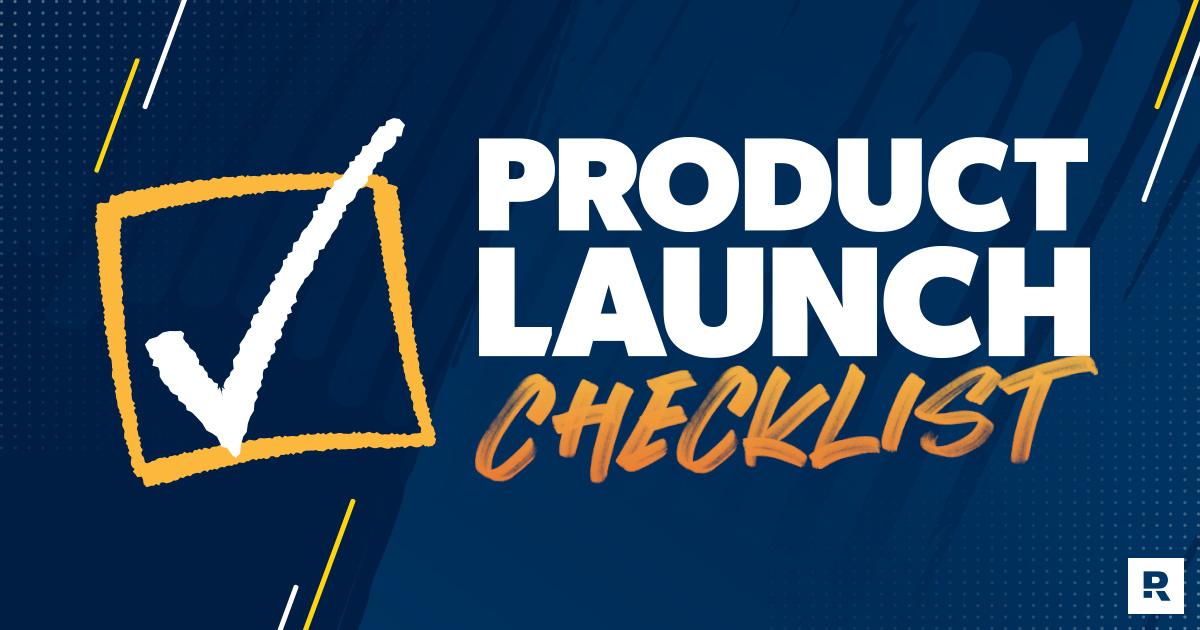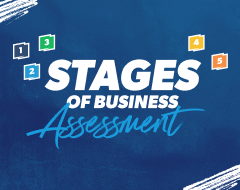
Key Takeaways
- A strong product launch starts with knowing your customer, solving a real problem, and doing the prep work to make sure the product is worth bringing to the market.
- Your product needs to go through real-world testing and get honest feedback so it can fail fast, improve, and get better before launch day.
- Price your product with purpose and position it clearly so people understand the value and how it helps them win.
- Your marketing should feel like a conversation, not a sales pitch. Use every channel you can to connect with people and serve them well.
- Launch with a plan, track your results, and hold a debrief so you can learn, grow and build momentum for the next one.
Ready to Level Up Your Business?
Find out your Stage of Business with our free assessment and get additional resources to help you level up by focusing on the right things at the right time.
Companies like Apple make super successful new product releases look easy. They’ve dialed in the secret formula for hyping up superfans who wait in line for hours or accidentally crash websites to get their hands on the latest and greatest device. That’s the dream, right? Not to have your website crash, but to get the market to stand up and notice that your new product has arrived—whether your brand is well known or still building a name for itself.
A new product launch is never a sure win, no matter who you are. That’s one reason why even Apple cofounder Steve Jobs demanded painstaking attention to detail every time his company worked on a new, high-tech gizmo. From the research and development phase all the way to executing the product launch strategy, success is in the details.
So what are the details you can’t afford to miss when you’re ready to launch a new product? Use the checklist below to work through 10 components of a successful product launch strategy.
Your Checklist for How to Launch a Product
Before we start talking about how to launch a new product, we’ve got to point out the obvious: For a truly successful product launch, you’ve got to do some homework to make sure the potential opportunities of your product launch outweigh the risks. In other words, you need to do some soul-searching, fact-finding and number-crunching by digging into the 10 Questions to Ask Before You Launch a New Product.
If you work through those preliminary questions and are ready to keep moving, this checklist will guide your new product launch from start to finish.
1. Clarify your key customer.
Who do you want to reach? If you’re hoping for more customers like those you already have (but don’t have the luxury of doing a fancy focus group), survey existing customers to learn about them. Ask questions like:
- What lights you up?
- How and when do you like to be communicated to?
- What pain points would you love to overcome in our product?
- How do you know when you’re ready to buy?
If you’re interested in attracting a new audience, dig in to any resources you can find that help you learn more about them and use the same set of questions.
2. Develop your prototype, and test, test, test.
In the value discovery process, you identify the problem you’re trying to solve for your key customer and why. Then, you use what you learn to develop your product idea, refine it, run it through quality assurance, and see how early users respond to it.
Pro tip: Most products never make it to the market in their original form. Allow your product to die and be reborn repeatedly. It will get better each time. Whether you need input on a label design, product name or price point, ask the people you want to use your product or service what they think. That said, you don’t want perfection to get in the way of progress. At a certain point, it’s time for blastoff. That’s the only way you’ll get the response you need for a new and improved version of your product.
3. Set your pricing.
The most important part of pricing is to understand what competitors charge so you come in at the right point. If your price is lower than others, or if it’s higher but for good reason, think of clever ways to tie that into your messaging. And be sure to account for any promo codes, sales and discounts for bundles.
4. Position your product.
This goes right along with knowing your value proposition and competition. Don’t breeze past this step—take time to think critically about what sets your product apart. Emotion drives the majority of our buying decisions, not logic. So lead with the why behind your brand and show how your product makes the customer’s life better.
5. Plan your marketing strategy.
This is where you break through competitor noise and reach your potential customers. You must believe your product is the best product to help your customer solve their problem. And remember that you’re serving them—not just trying to close a sale. Much like passion wins over logic, conversation wins over marketing. As you create your content, talk with your audience—don’t push them.
Use a combination of these media channels to communicate:
- Paid: display ads, commercials and influencer partnerships
- Owned: your website and landing pages, email journeys, press releases and blog content
- Earned: reviews, word of mouth and interviews
- Shared: social channels
For online sales, double-check that your payment collection method is easy to use, secure and ready to handle the number of customers you expect.
Pro tip: Be prepared for high promotional costs to get the word out about your product. Just like a jet uses the most fuel at takeoff, a new product requires a huge chunk of time and money to get off the ground.
6. Set your launch goals.
Since you already defined what success looks like for your product launch, now you’ll tie that success to real numbers. For example:
- How many people do you want to try your product versus buy it?
- How many sales do you want to make in the first three days, three weeks and three months?
- How many people do you want to add to your mailing list?
And remember, these launch goals shouldn’t stand alone—they need to be tied to your overall business goals so every win builds long-term momentum.
7. Time your launch.
Timing is more than deciding which month is best for your product launch strategy. Yes, you’d be smart to launch a landscaping business in the spring and an e-commerce store right before the Christmas shopping season. But timing also considers the economy, the current political climate, where your business is located, and cultural trends.
Money expert Dave Ramsey published The Total Money Makeover when everyone was obsessed with makeovers for their home, hair, wardrobe—and even their financial fitness. That book quickly became a bestseller and has since sold more than 9 million copies. It pays to know what’s happening in the world around you.
8. Prep your teams.
Timing also considers how ready your team is to support your new product launch.
- Do your sales and customer service teams have the details they need to talk about your product confidently and troubleshoot problems?
- Are your product and marketing squads clear on timelines, expectations and your desired sales process?
- Are key stakeholders aware of how the product launch plan is progressing, and have they approved your projected launch date?
Regular stand-up meetings, team meetings and stakeholder updates will help you communicate clearly with your team and bring any confusion to the surface.
9. Track your results.
Those launch goals you set? Now you get to track your progress so you know what levers to pull to help you reach them.
Don’t just look at raw sales numbers—dig in to the full story. Track things like website traffic and conversions, customer behavior, marketing performance, and customer feedback. The key is to measure often and adjust quickly. If your ad campaign isn’t delivering, shift the budget. If customers keep asking the same question, update your website copy to clarify.
10. Schedule a retro.
A retro, also called a postmortem or debrief, is where you’ll talk through data and other learnings to decide what’s next for your product—and how to improve the product launch strategy next time. As you look at your wins and losses, keep in mind that an effective launch strategy for a new product helps a bad product fail faster and a good one fly farther. So learn everything you can and keep flying.
Build Momentum With Every Launch
Momentum doesn’t just show up out of nowhere—it’s something you build step by step. Every time you launch a new product, you’re not just putting something new in the market—you’re growing your business, serving your customers better, and moving closer to your bigger goals. This product launch checklist gives you the practical steps to make it happen and the confidence to boldly declare to the world that your product has arrived.
Next Steps
- Take the Stages of Business Assessment to learn more about how to build momentum throughout the 5 Stages of Business.
- Once you know where your business stands, sign up for EntreLeadership Elite™ to get the full plan to take your business to the next level. Elite includes digital tools to help you grow your business, serve your customers well, and achieve your goals.

